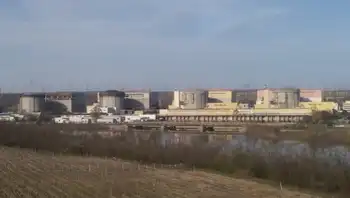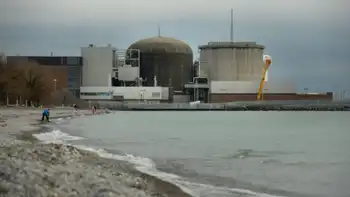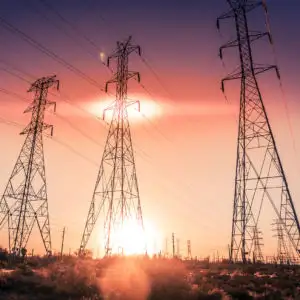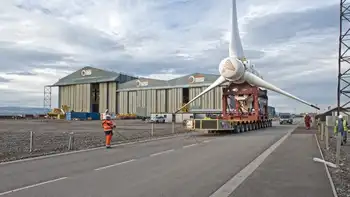Saskatchewan approves carbon capture
Backed with $240-million from the federal government, SaskPower — the provincially owned utility — will rebuild an aging coal-fired unit at its Boundary Dam site in southern Saskatchewan and capture the CO2 from flue gas using solvents.
The decision to proceed is a major step forward in Canada's strategy of pursuing carbon capture and storage CCS to reduce greenhouse gas emissions from power plants and oil sands facilities. While many environmental groups oppose clean-coal technology, others see it as a critical technology that will help Canada — and coal-dependent countries like China and the United States — meet their emission reduction targets.
While CCS technology may help reduce greenhouse gases in the power sector, it has limited potential in the oil industry, which is facing a growing backlash in the United States and Europe over its heavy emissions of greenhouse gases. Two projects in Alberta propose to capture CO2 from upgraders near Edmonton, but no company is proposing to deploy it at the mines or in-situ production sites due to its prohibitive cost.
As well, both the power and oil industry face major questions about the technology, including the lack of regulations governing the injection of CO2 underground, and skepticism about whether it will remain trapped.
The biggest hurdle to wide-scale adoption is the price tag. It can cost at least $80 a tonne to remove and sequester the carbon dioxide at power plants, and even more when the technology is used at upgraders. In the absence of more onerous carbon prices or regulations, companies have little incentive to spend the money, unless they are heavily subsidized.
But SaskPower president Robert Watson said that, with the federal contribution and the revenue from the CO2 sale, the cost per kilowatt hour of the electricity will be comparable to the new natural gas-fired plant.
The Saskatchewan unit — one of six at the site — will generate 110 megawatts of electricity and yield some one million tonnes a year of CO2, which will be sold to oil companies. SaskPower said construction will begin immediately, with first the power expected in 2014.
SaskPower says several producers are interested in purchasing the gas, which will be injected into wells to stimulate production and will remain trapped underground. Encana Corp. already operates one of the world's largest carbon capture and storage CCS projects in the region, and pipes its CO2 from a plant in North Dakota.
Alberta and the federal government have agreed to subsidize the development of four proposed projects in that province, including two upgraders that propose to capture CO2 from oil sands' bitumen processing and sell the carbon dioxide for enhanced oil recovery.
So far, only one of those projects — the North West Upgrader — has received the green light to proceed, while proponents of the other three continue to study their economic feasibility.
The minister responsible for SaskPower, Rob Norris, said the province must develop CCS technology because it has 300 years' worth of coal reserves and relies on the most GHG-intensive fuel for 65 per cent of its electricity.
"We need to make progress on greenhouse gas emissions — that is to lower them — and this is going to allow us to make progress on that," Mr. Norris said. "Coal is important but we also know we need to have clean-coal technology."
"Certainly, we think coal has an important place not only in Saskatchewan, but within Canada and around the world. What we want to do is play a leadership role in helping to clean it up, thereby helping to sustain it."
The province had been waiting for clearer guidance from the federal government, which last June announced a policy that would prohibit the construction of new coal-fired power plants after 2015 unless their emissions were at least equal to those from a new natural gas plant.
Federal Environment Minister Peter Kent had promised to release draft clean-coal regulations this month, but the election prevented that.
"It's climate policy, climate policy, climate policy" that will drive adoption of CCS, said David Keith, a University of Calgary physicist who served on a provincial task force studying the technology.
"If there is no price to using the atmosphere as a waste dump, then there's no reason to waste your time on it."
Pembina Institute executive director Ed Wittingham said it is critical for government to put in place regulations or carbon costs that will provide incentives for companies to spend money on CCS.
"There are only a few approaches that allow you to reduce emissions in a big way in a relatively short time frame, and CCS is one of those ways," Mr. Wittingham said.
In Alberta, TransAlta Corp., Capital Power LP and Enbridge Inc. are completing engineering studies on a proposed CCS unit at the Keephills 3 generating station, with plans to sell the CO2 for enhanced oil recovery. Royal Dutch Shell PLC is leading a proposal to capture emissions from its Scotford upgrader, while Swan Hills Synfuels is pursuing a scheme to gasify coal underground and sequester the resulting carbon dioxide emissions.
Saskatchewan's Mr. Norris said CCS is just one strategy that the province is pursuing as it looks to diversify its sources of power and reduce its emissions. SaskPower has invested heavily in generation from natural gas, wind and biomass such as wood waste, but Mr. Norris said coal will remain the main source of base-load power.
Related News
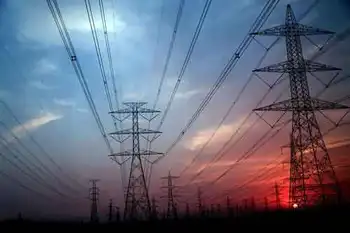
Australia's energy transition stalled by stubbornly high demand
MELBOURNE - A more than 200% increase in installed solar power generation capacity since 2018 helped Australia rank sixth globally in terms of solar capacity last year and emerge as one of the world's fastest-growing major renewable energy producers.
However, to realise its goal of becoming a net-zero carbon emitter by 2050, Australia must reverse the trajectory of its energy use, which remains on a rising path in contrast with several peers that have curbed energy use in recent years.
Australia's total electricity consumption has grown nearly 8% over the past decade, compared with contractions over the same period of more than…


